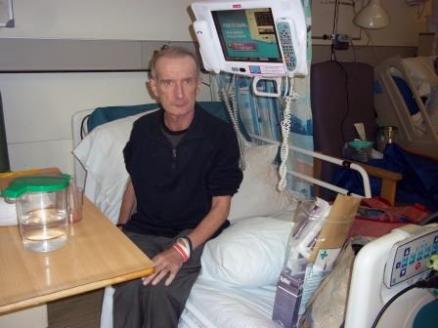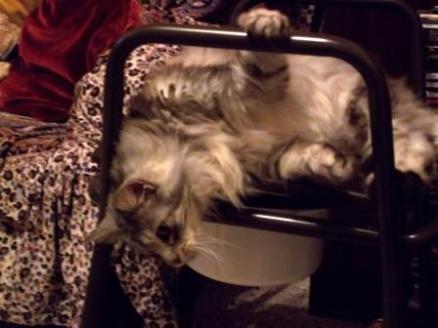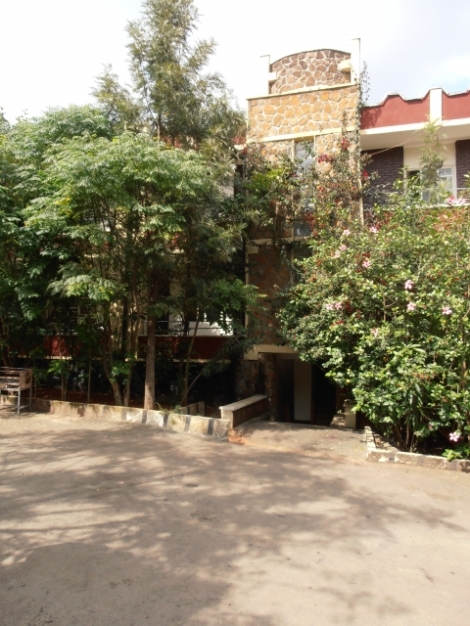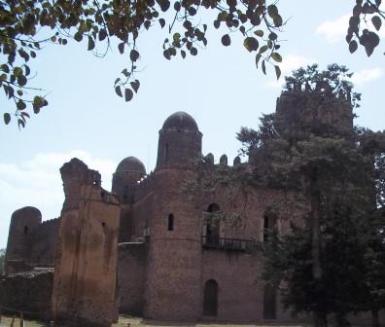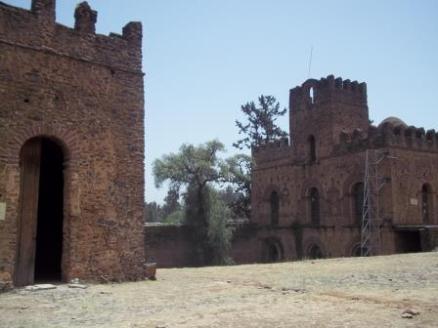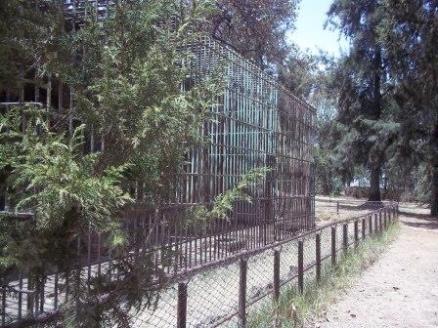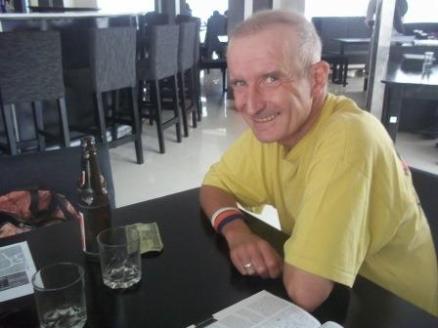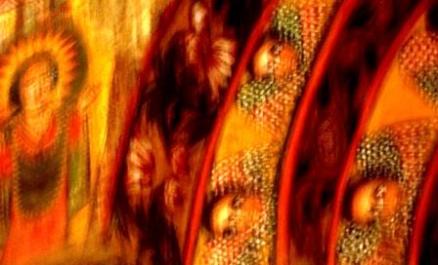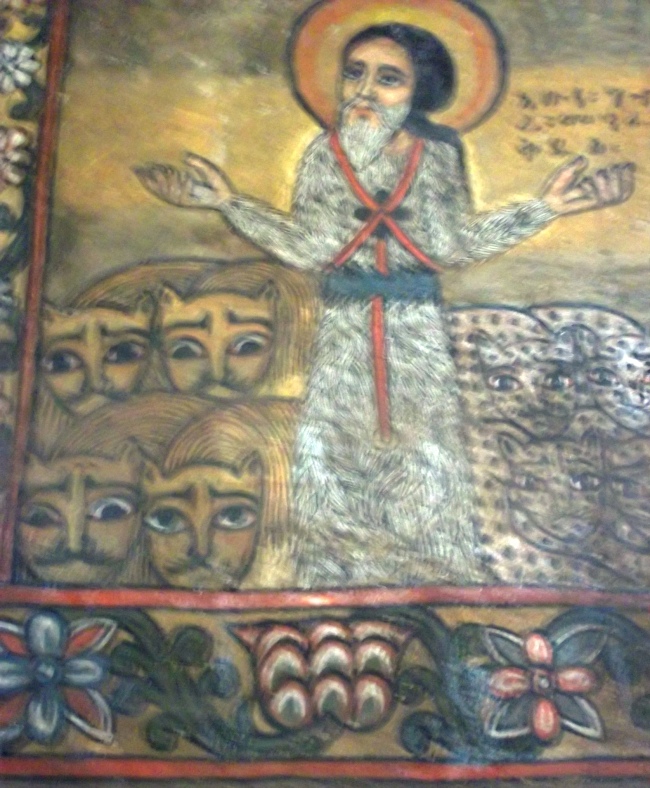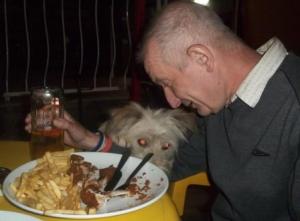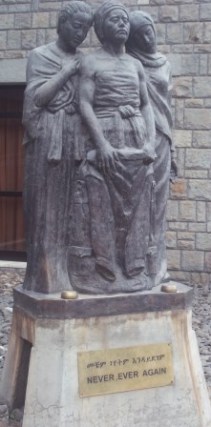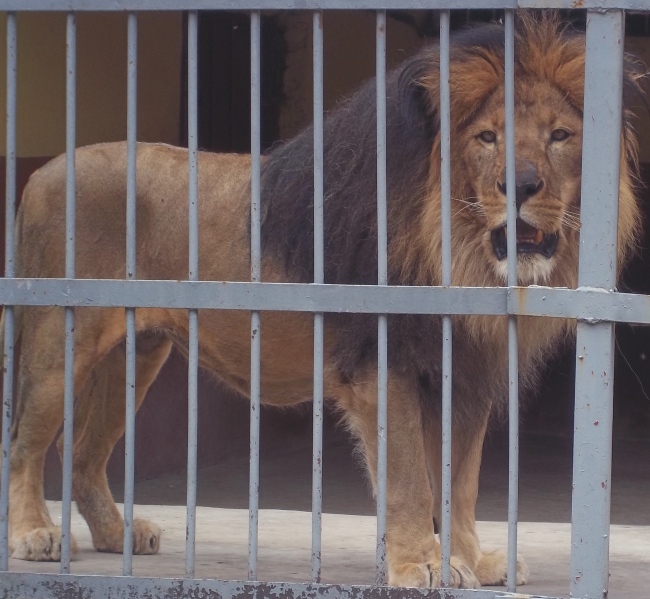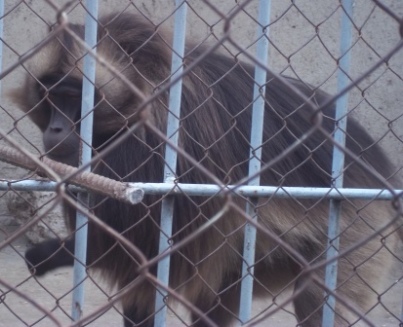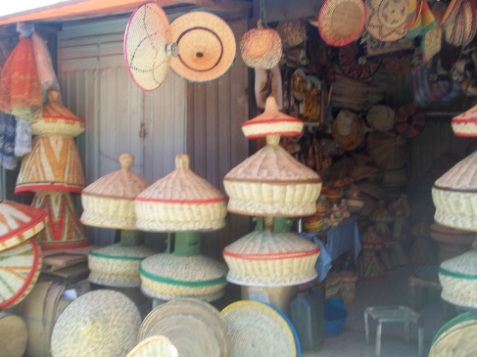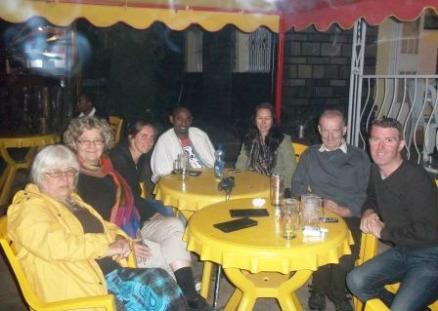Funny how things happen in life: this time last year Steve and I were preparing to fly to Addis, buying items requested by friends, packing, emailing all the people we planned to see…. I last worked on this blog in the autumn, fully intending to complete it and then do something with the letters and photos from my first year in Woldia – but things aren’t always as you plan them to be. Early in January Steve suffered from a stroke (and how glad I am now that I’d completed the VSO placement and that we had the chance to return together, because there is no way either would be possible at the moment.)
It did have a few lighter moments though – when a commode was delivered to the house just before he came home, the cat immediately made it her new place and took to using it as a frame to perform ‘catcrobatics!’
More than 4 months on, Steve is much recovered, though still not completely mobile or as mentally agile as he used to be. Subsequently he developed diabetes, which has made life very busy – a sequence of medical appointments, and coming to terms with daily medication routines. What with part-time teaching and all of this going on at home, time for blogging has been difficult to find. On the plus side, I’m thankful that I no longer teach full-time: I wouldn’t have been able to do that … and I’m endlessly grateful for our wonderful British NHS, and more angry than ever at attempts to pull it apart.
The third episode of this tale is, thus told very much in retrospect and from a somewhat changed perspective than the earlier 2 sections. It seems a long time since we were in Gondar with Jenny last June – in fact I saw her more recently in London in September at NATE’s 50th birthday party. (That’s how we met in the first place – as young English teachers, at an English teachers’ conference in the 1980s – so it was pretty amazing to discover, just before we flew, that she was working in Ethiopia, and living in one of the places we planned to visit.)
It was great to see Jenny: as soon as we arrived she provided us with a large bowl of pasta and home-made tomato sauce, which was just what I needed after that long bus journey. The last couple of glasses of the French wine also came out that night. Steve, ever the carnivore, went out and found a local restaurant that served him with tibs and injera. We spent the rest of the evening catching up with what Jenny was doing working at Gondar university: basically the same role Marian had had in Woldia, but with many more lecturing staff on her course, so she was supervising other leaders as well as teaching the HDP course herself.
I’d stayed at the Universal Guest House a couple of years previously, when Marian and I went on our Lalibela trip. There were quite a few volunteers living there at that time. Gondar University has a medical department, so there were a number of doctors and midwives involved in training, as well as teachers. Jenny had her apartment to herself, which was great as we had a bedroom and bathroom of our own. She also had a good sized kitchen with luxuries, including a sink, an oven and such like. She also had a bottle of good malt whiskey and made us a most delicious nightcap of hot chocolate with a splash of scotch. Never had that before, but would again. So far so positive. But our plans to spend time together changed the following day as Jenny wasn’t well: though it isn’t unusual to be prostrated by a stomach upset from time to time in Ethiopia, this one was unfortunate in its timing.
Jenny spent the day sleeping on her sofa while we set off to town. Gondar is pretty amazing, and its attractions less well known than those of Lalibela. I had no idea there were mediaeval castles in Africa before I visited in 2011, and Steve was as impressed as I’d been the first time I saw them. As a volunteer, I only had to pay the same as a local (pennies), but this time it was full tourist price. Still well worthwhile for the best part of two hours we spent with an informative and friendly guide who explained the history of the Fasilidas dynasty to us, and the sequence of building their various palaces. It was low season and the weather was not good, so we were virtually the only people in the place, which may have contributed to the attention we received. Compared to the massive cost of touring the churches of Lalibela, this was worth the price – less than £10 if I recall accurately.
The lion cages where Haile Selassie kept the Ethiopian black lions are still at the site, but no lions anymore.
After all the walking around, we had a beer in the very modern bar at the Circle Hotel, but less impressed by the food menu.
After an enjoyable lunch in the Qwara Hotel (one of Gondar’s tourist hotels – it made a change for Steve to be able to choose a meal from a fairly extensive European menu after a lot of tibs in Woldia and Axum) we walked up the hill out of town to the Church of Debre Birhan Selassie – really a must see – it has the mural on the ceiling of multiple winged angel faces, and some other impressive paintings and ecclesiastical artifacts as well.
It’s hard to get good photos of the ceiling as flash cameras aren’t allowed, for obvious reasons, but this gives an idea – also the lovely painting of Daniel in the lions’ den. (Lions are a bit of a theme in this section of the journey.)
Back to Jenny’s via Fasilidas’ Pool; it was pouring with rain by this time and we get very wet waiting for a bus, maybe appropriately. This is the place to be at Timkat, when the pool is filled with water and the event is celebrated by mass jumping in. Marian and I had watched this on our landlady’s television the first year we were in Woldia and Marian was lucky enough to be there with a visiting friend the following year to see it for herself.
It was still raining when we got off the bus on the main road; the walk down to Jenny’s takes ten minutes or so, so we sheltered in a nearby bar, where everyone made us very welcome, as we had a couple of beers. Jenny still wasn’t up to a night out when we got back, so we invited out her neighbour, John, a recently arrived Canadian volunteer, who had the misfortune to contract malaria almost as soon as he arrived in Ethiopia – though he was much improved by the time we met him. The deal we struck was that if we treated him to a meal, he’s do the same for Jenny once she was fit to enjoy it!
We walked to a restaurant on the main road, not far from the bar we’d been in earlier. This proved to be a cosmopolitan place called Hard Rock, though lacking in the typical memorabilia you might find in similarly named establishments in London or New York! Many young and very westernised Ethiopians were having a good time eating burgers and pizzas. The food we had was good (I suspect the burgers were less so – Ethiopian beef is not hung, so it’s often incredibly tough), the boss was very friendly and spoke extremely good English, John was entertaining company: it was a really enjoyable evening.
In the morning, we had a leisurely breakfast (Jenny was back on her feet and eating by then) and took a taxi to the airport in time for our lunchtime flight back to Addis. This was uneventful – though it still felt strange as ever to go from the traditional city to the air-conditioned modern world of the airport. Addis, of course, is even more of a contradiction in that way. I felt like an old hand as we strolled out of arrivals, walked straight past all the taxis who want to charge around 200 birr (about £8) to drive the couple of miles to Haya Hulet, and negotiated a line taxi under the interchange near the airport entrance. I fended off a trio of juvenile pick pockets like a true professional (they seem to prey on people straight off planes – I suppose if you’ve been on a long flight you’d be sleepy and disoriented – but our flight only took about an hour. )
From Haya Hulet, we texted all and sundry to sort out a place to meet – ending up having a late lunch in Road Runner.
We were soon joined by Abbie and, after work, Marian and Liz. I can’t remember where we went that night but I think Marian may well have cooked a goodbye meal for us: she was leaving for Canada herself only a couple of weeks later and was hoping we could stay long enough for her farewell meal – more tibs – a whole sheep involved in this one. Unfortunately we had to be back in England the week before that, me to take part in GCSE standardising, Steve to travel to work at the G8 conference in Ireland.
After that it was a sequence of goodbyes – lunch at the Ambassador Gardens with Henok – he tried a club sandwich and was disappointed that it ‘was not what I thought it would be’. We promised we’d all try to be back for his graduation from medical school in some 4 years’ time. We did a bit of sight-seeing that final day – I got to see The Red Terror Museum near Meskal Square – been trying to do that ever since I was in Woldia – a searing memorial for all the political victims who died under Durg persecution.
We walked up to Arat Kilo and found the Lion Zoo – the last remaining black lions in Addis, descended from those kept at the palace of Haile Selassie, and a few other native species.
Loved this big male gelada baboon!
Some souvenir buying – a shekla tibs cooking pot found in one of the tourist shops on Meskal Square, and finally, it was nostalgic to hop off the line taxi at Shola market, where Marian and I had bought our bedding and kitchen equipment in the September of 2010, and to get into some serious bargaining for an injera basket.
Liz gathered together a group of volunteers who had stayed on in various roles in Ethiopia – quite a few of them still teaching though some now in private schools – some now with Ethiopian partners.
We had a long evening meal at Road Runner before heading back to Liz’s and picking up the bags to take that taxi back to the airport for the late plane to Istanbul. Bought a couple of tourist t-shirts at the airport – they didn’t sell stuff like that at the market – and boarded the plane back to Europe. It was a long journey involving a stop-over of 5 hours at Istanbul. Drank cappuccino and got online in the café. This was the journey ‘home’ – and the end of an experience in a way. It underlined the VSO experience but not in any way ended my relationship with my ‘other home’.
Over the summer I was reading a lot of travel writing. The paragraph below moved me so intensely that I copied it down as it sums up in so many ways my experience of living in, and travelling around, the highlands of Northern Ethiopia.
“There’s something profoundly intense and intoxicating about friendship found en route. It’s the bond that arises from being thrust into uncomfortable circumstances, and the vulnerability of trusting others to navigate those situations. It’s the exhilaration of meeting someone when we are our most alive selves, breathing new air, high on life-altering moments. It’s the discovery of the commonality of the world’s people and the attendant rejection of prejudices. It’s the humbling experience of being suspicious of a stranger who then extends a great kindness. It’s the astonishment of learning from those we set out to teach. It’s the intimacy of sharing small spaces, the recognition of a kindred spirit across the globe.
It’s the travel relationship, and it can only call itself family.”
Lavinia Spalding’s introduction to Vol 8 The Best Women’s Travel Writing
